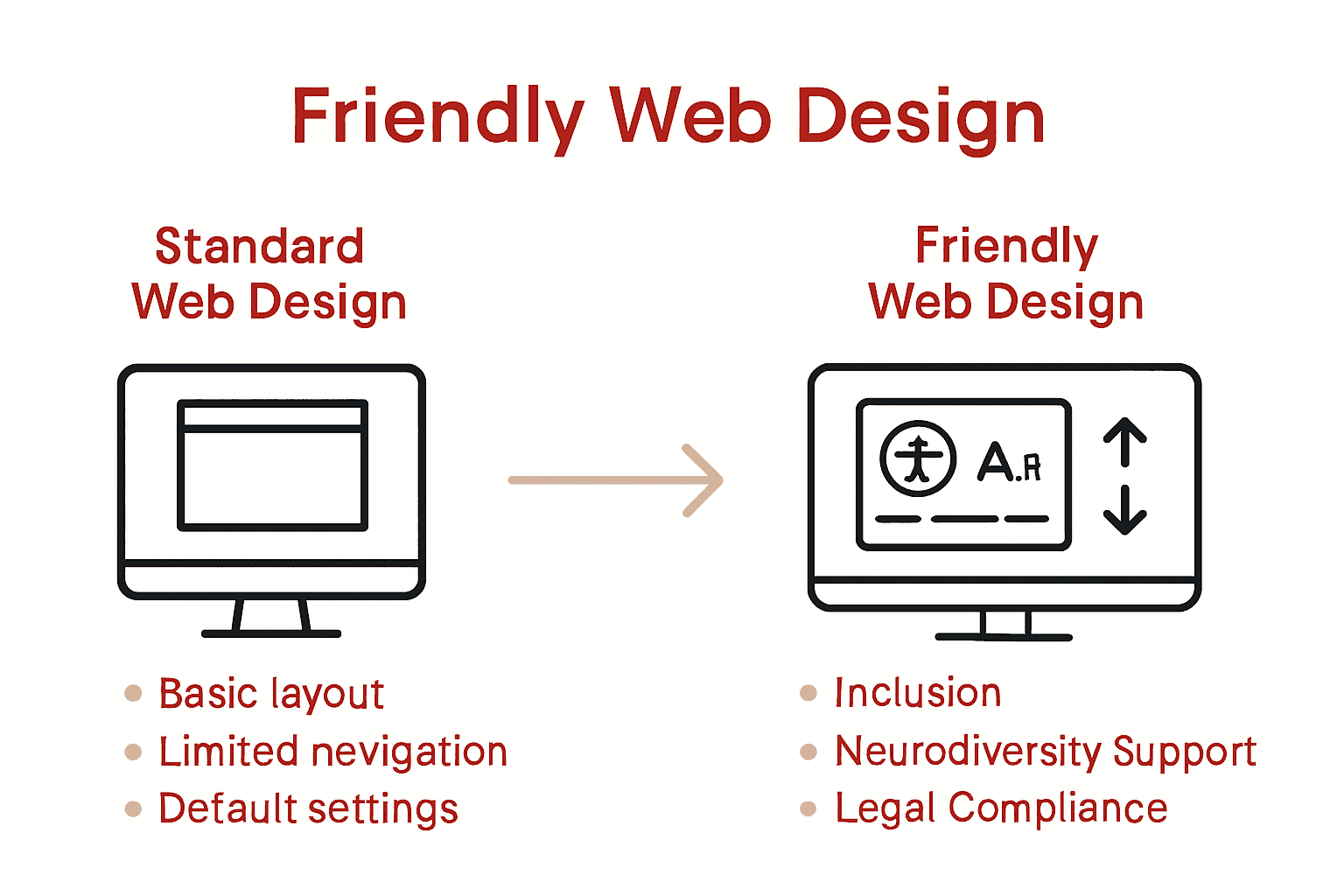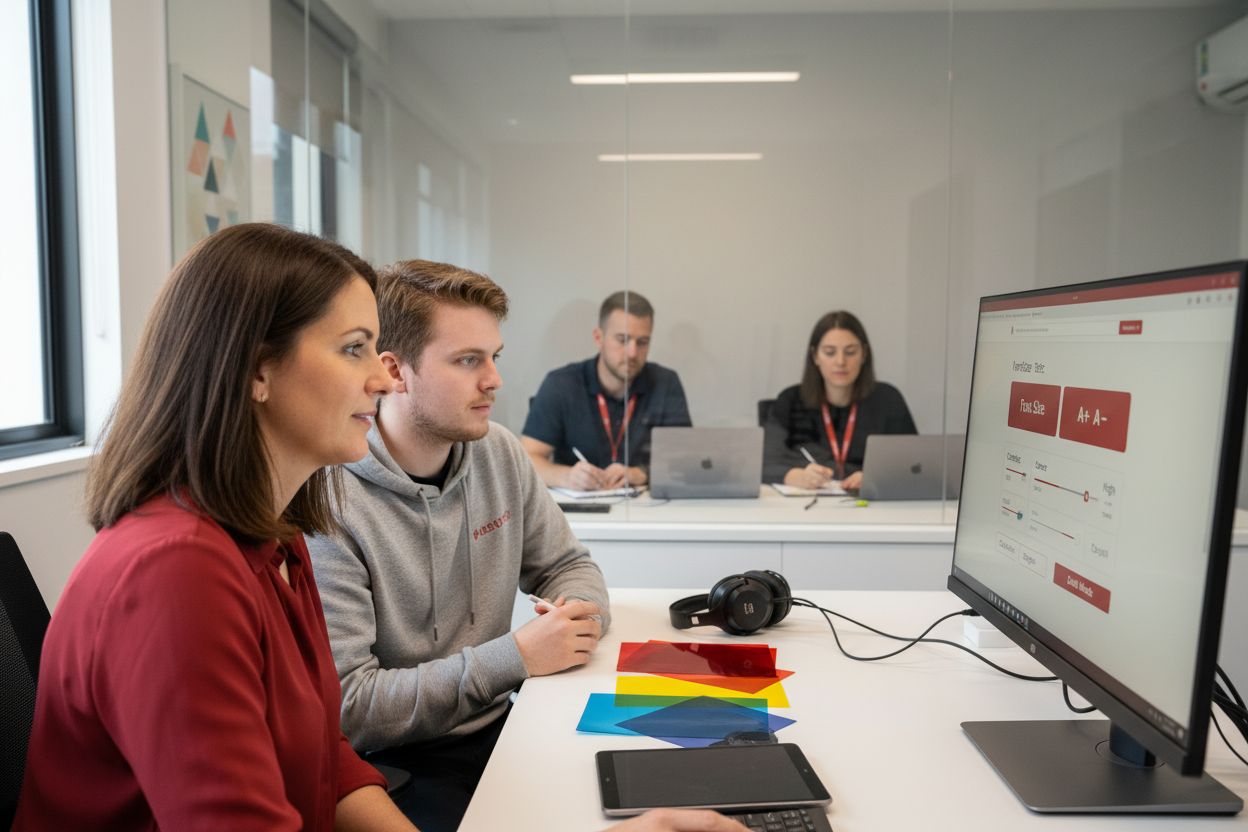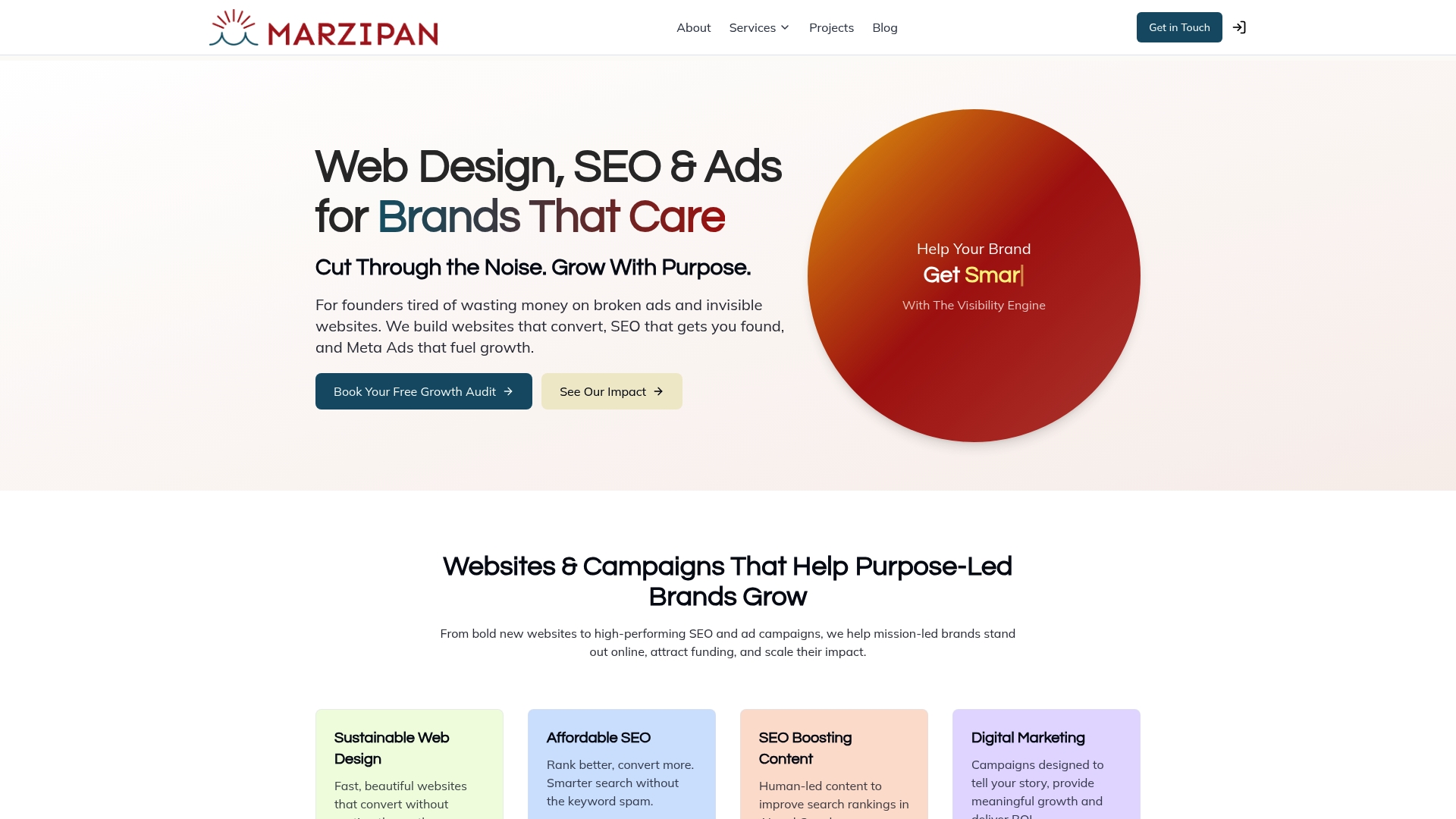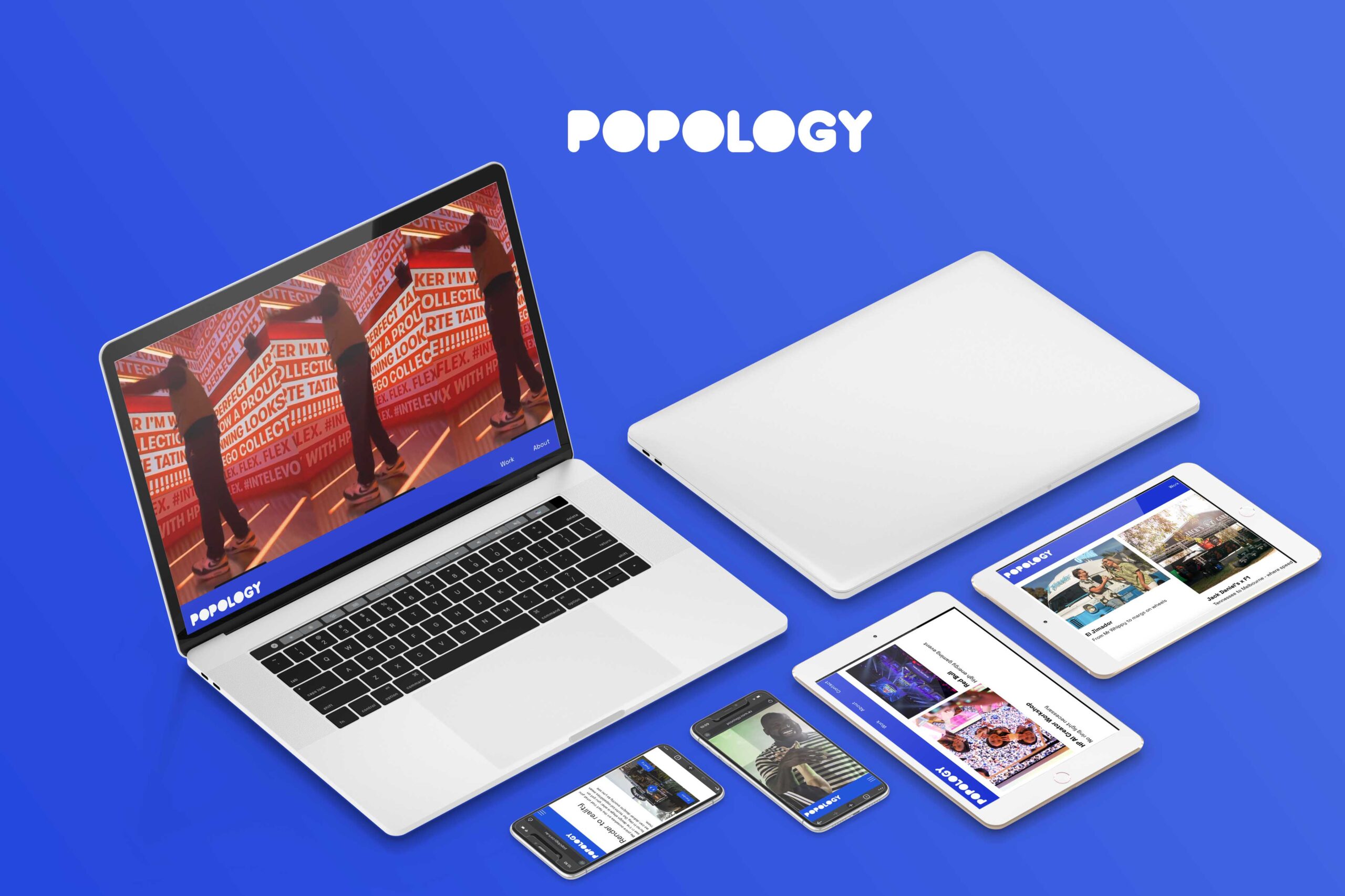Accessibility in Web Design: Complete Guide for Sydney
Did you know that nearly one in five Australians live with some form of disability? Accessibility in web design ensures that digital spaces work for everyone, welcoming people of all backgrounds and abilities. With new standards like WCAG 2.2 Level AA becoming mandatory in 2025, thoughtful design is no longer optional. By embracing accessibility and inclusion, online experiences become smoother, more intuitive, and comfortable for all users.
Key Takeaways
| Point | Details |
|---|---|
| Inclusive Design | Accessibility friendly web design prioritises accessibility and user comfort through core principles that support diverse user needs. |
| Compliance with Standards | Websites in Australia must comply with WCAG 2.2 Level AA to ensure accessibility, going beyond mere compliance to foster inclusion. |
| Neuroinclusive Approach | A neuroinclusive design acknowledges the diverse cognitive experiences of users, creating environments that accommodate various sensory and interaction preferences. |
| Focus on Usability | Seamless navigation and performance are essential; websites should integrate technical efficiency with user-centered design to enhance overall digital experiences. |
Table of Contents
- What Friendly Website Design Means
- Accessibility Principles And Australian Standards
- Responsive & Adaptive Design Methods
- Neuroinclusive And Inclusive Design Approaches
- Performance, Navigation, And Usability Elements
What Accessibility Friendly Web Design Means
Accessibility in web design goes beyond creating visually appealing interfaces; it’s about crafting digital experiences that welcome and support every single user. Inclusive design transforms websites from mere information platforms into accessible, intuitive spaces where everyone feels comfortable navigating.
According to the Australian Government Style Manual, friendly design fundamentally means creating products and services that work universally. This approach requires:
- Embedding accessibility as a core design principle
- Using consistent and responsive layouts
- Designing content that accommodates diverse user needs
- Supporting time-poor users and mobile device interactions
The Centre for Inclusive Design emphasises that truly friendly websites emerge from understanding human diversity. This means designing collaboratively, considering users with different abilities, technological familiarity, and interaction preferences. An accessible website doesn’t just look good—it feels welcoming, adapts seamlessly, and removes barriers that might prevent someone from accessing information or completing tasks.
At its heart, friendly website design is about empathy.
 It recognises that digital spaces should be as diverse and accommodating as the communities they serve, creating digital environments where everyone can connect, learn, and engage effortlessly.
It recognises that digital spaces should be as diverse and accommodating as the communities they serve, creating digital environments where everyone can connect, learn, and engage effortlessly.
Accessibility Principles and Australian Standards
Website accessibility in Australia isn’t just a best practice—it’s a legal requirement that ensures digital platforms are usable for everyone, regardless of their abilities or technological capabilities. Web Content Accessibility Guidelines (WCAG) have become the cornerstone of inclusive digital design, providing a comprehensive framework for creating websites that work for all users.
As of April 2025, Australia has formally adopted WCAG 2.2 at Level AA as the minimum standard under the Disability Discrimination Act. This significant update improves accessibility across multiple dimensions, with particular emphasis on:
- Enhanced mobile device interactions
- Improved cognitive accessibility features
- More comprehensive support for users with diverse technological needs
The Australian Human Rights Commission recommends that organisations go beyond basic compliance. Their guidance suggests conforming to WCAG 2.2 at Level AA while also considering additional standards like:
- Authoring Tool Accessibility Guidelines (ATAG) 2.0
- Web Accessibility Initiative Accessible Rich Internet Applications (WAI‑ARIA) 1.2
- Electronic Publication (EPUB) 3.3 standards
These comprehensive guidelines ensure that websites are not just technically compliant, but genuinely inclusive. By implementing these standards, Australian businesses and organisations can create digital experiences that welcome everyone, demonstrating a commitment to equal access and technological empowerment.
Here’s a summary of core Australian website standards and their focus:
| Standard or Guideline | Main Focus | Examples of Application |
|---|---|---|
| WCAG 2.2 Level AA | Accessibility Inclusive design |
Minimum legal standard Compliant navigation |
| ATAG 2.0 | Accessible authoring tools | Content management Editor accessibility |
| WAI-ARIA 1.2 | Support for assistive tech | Enhanced screen reader support Interactive elements |
| EPUB 3.3 | Accessible digital publications | eBooks Online reports |
Responsive & Adaptive Design Methods
Responsive and adaptive design represent critical strategies for creating websites that seamlessly adjust to different devices, screen sizes, and user preferences. These approaches ensure that digital experiences remain consistent, accessible, and user-friendly across smartphones, tablets, desktops, and emerging technologies.
Traditionally, responsive design focused on fluid grid layouts and flexible images that automatically resize. Now, emerging academic research suggests more sophisticated approaches that go beyond simple resizing. The modern web design paradigm prioritises intelligent, contextual adaptation.
A fascinating recent academic framework proposes an innovative Comfort Mode that allows users to personalise interface settings dynamically. According to research published on arXiv, this approach enables customisation across critical interface elements such as:
- Contrast levels
- Typography preferences
- Motion sensitivity settings
- Content scaling options
This neuro-inclusive personalisation represents the future of web design, transforming responsive techniques from passive resizing to active, user-centric experiences. By allowing individuals to modify digital interfaces to suit their unique needs, websites can become genuinely inclusive spaces that adapt not just visually, but functionally. The goal is no longer just making content fit different screens, but making digital experiences feel comfortable and natural for every user.

Neuroinclusive and Inclusive Design Approaches
Neuroinclusive design represents a groundbreaking approach that recognises the incredible diversity of human perception and interaction. It goes far beyond traditional accessibility, acknowledging that every individual experiences digital spaces differently, especially those with neurodivergent profiles.
According to Wikipedia’s definition, neuroinclusive design is fundamentally a human-centred strategy that enables individuals with varied sensory experiences to coexist comfortably. This approach considers critical elements like:
- Volume sensitivity
- Colour perception variations
- Spatial organisation preferences
- Need for environmental simplicity
- Mitigation of social interaction pressures
Universal Design Australia highlights a critical insight: traditional design standards often overlook invisible disabilities, particularly neurodiversity. Emerging design guidelines now emphasise creating environments—digital and physical—that are:
- Spatially predictable
- Offering clear navigation paths
- Providing ‘escape’ or ‘reset’ zones
- Adaptable to different sensory tolerances
True neuroinclusive design transforms websites from mere information platforms into thoughtful, flexible spaces that welcome diverse cognitive experiences. It’s about creating digital environments where everyone, regardless of their neurological profile, can feel comfortable, understood, and empowered.
Performance, Navigation, and Usability Elements
Website performance isn’t just about speed—it’s about creating seamless, intuitive digital experiences that guide users effortlessly through information. Modern friendly websites must balance technical efficiency with human-centred design principles that make navigation feel natural and purposeful.
According to the Australian Government Style Manual, accessibility is intrinsically linked to usability. Well-structured content does more than look good—it dramatically improves:
- Readability across different devices
- Compatibility with assistive technologies
- User comprehension and engagement
- Content discoverability
Examining real-world implementations like the Australian Federal Police website, we see sophisticated approaches to navigation and performance. Advanced technologies such as HTML5, CSS3, JavaScript, and WAI-ARIA are strategically employed to support diverse user interactions. This approach involves:
- Implementing responsive layout techniques
- Creating clear content hierarchies
- Ensuring cross-device compatibility
- Conducting regular accessibility audits
Ultimately, performance and navigation are about creating digital environments that feel intuitive, responsive, and welcoming. By prioritising user experience and technological adaptability, websites transform from mere information repositories into dynamic, inclusive platforms that understand and anticipate user needs.
Ready to Make Your Sydney Website Truly Welcoming?
If you have found yourself weighed down by inaccessible websites or challenged by the complexities of universal standards such as WCAG 2.2, you are not alone. Many Sydney business owners worry that their digital spaces are not truly friendly to everyone. The pressure to deliver both inclusive and high-performing online experiences is real, especially as expectations around neuroinclusive and responsive design grow.

At Marzipan, our team specialises in transforming these challenges into tangible strengths. We build websites that blend sustainable standards and advanced accessibility with genuine human empathy. If you want your mission to shine through with a digital presence that is both beautiful and genuinely inclusive, explore our approach at Marzipan Sustainable Websites. Visit our main site to see how your organisation can meet new accessibility standards and lead with purpose-driven design. Discover the comfort of working with experts who place accessibility and user empowerment at the heart of every project. Begin your transformation today before your competitors step ahead.
Frequently Asked Questions
What is friendly website design?
Friendly website design refers to creating digital experiences that are inclusive, accessible, and user-friendly for all individuals, regardless of their abilities or technological skills.
Why is accessibility important in website design?
Accessibility is crucial because it ensures that all users, including those with disabilities, can navigate and interact with websites effectively, promoting equal access to information and services.
How do responsive and adaptive design methods differ?
Responsive design focuses on fluid layouts that adjust to different screen sizes, while adaptive design creates predefined layouts for specific screen sizes, ensuring optimal user experiences across all devices.
What is neuroinclusive design?
Neuroinclusive design is an approach that caters to the diverse sensory experiences of individuals, particularly those with neurodivergent profiles, by creating flexible and accommodating digital environments that enhance usability and comfort.
Recommended
- Sydney Web: Complete Guide for Mission-Driven Brands – Marzipan
- 10 Top Web Design Tips for a Stunning Website – Marzipan
- 7 Essential Steps for Your Digital Marketing Checklist in Sydney – Marzipan
- SEO Audit Check: Complete Guide for Sydney Businesses – Marzipan
- Effective Website Design: Key Principles and Proven Strategies 2025







